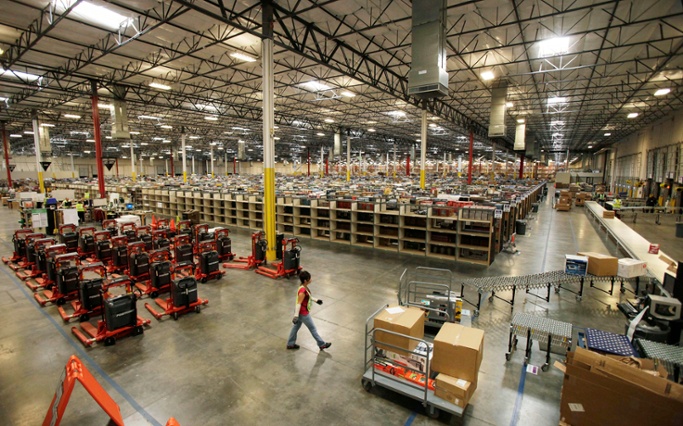A warehouse is one of the most instrumental parts of a business. This facility is more than an oversize storage room. This is where the productivity can be measured by seeing what’s going out and what’s coming in. Therefore, it stands to reason that a warehouse needs to be efficient in order for a company to be successful. With this in mind, three tips to make any warehouse more efficient and productive are listed below.
The tips mentioned here include improving the warehouse’s design, keeping a proper inventory, and automating what can be automated.
Design Shelving from Top to Bottom
A warehouse is only as productive as its design. The layout should be carefully crafted to save time and make things easy for the employees. A system should be in place where items are sorted in terms of how frequently they’ll be accessed. The hot items should be the easiest to reach. In the event of a time sensitive issue, nobody wants their warehouse workers to be digging around looking for an item that shows on the inventory but is nowhere to be found. Pallets should be organized according to size and importance. Also, items stored in boxes should be labeled and structured in a logical fashion.

Inventory – Issue or Not?
The design, it stands to reason, is only as good as the inventory. Records should be kept organized and regularly updated. It’s possible that many warehouses have an inventory sheet that lists items that are no longer on site. In order to prevent shrinkages, overages, and general headache, the inventory must be given proper attention. In line with the design and layout mentioned above, boxes and pallets should sit in clearly labeled shelves and specific areas. This will help the employees know exactly where an item is, or is supposed to be. Inventory can be done in house, or by hiring a specialized team to count everything and compare it to the current records. No matter how it’s done, it should also be checked at regular intervals.
Manpower or Automation?
Human labor can only take a warehouse so far. Humans are also prone to error and all sorts of other issues that can be minimized with a proper automated system. Automation in the warehouse is more than computer software. It is possible to implement automated pallet storage as well as robots made for packing items, conveyor systems, and even computer controlled picking of items. There are even self-driving forklifts available for those who want to go full automation. Whether one selects all of this items, or only some of them, automation will increase the warehouses productivity by leaps and bounds.
Automation leads to faster dispatch. By using an automated pallet system, would needn’t worry about storage or where items are. These systems provide a speed and security that human labor has yet to conquer. These systems don’t nudge out human workers completely. In fact, they allow the labor force to focus on their assigned task and not worry over the design and inventory issues mentioned above. Letting the computers handle the heavy lifting makes for a warehouse environment where everybody knows their job and has ample time to perform it. This means a more productive business.
Final Thoughts
A properly designed warehouse leads to a better inventory. Automation takes over and keeps everything in order. Every warehouse stands to improve in some facet or another. By keeping these tips in mind, stress and hassle are minimized and productivity is optimized.
